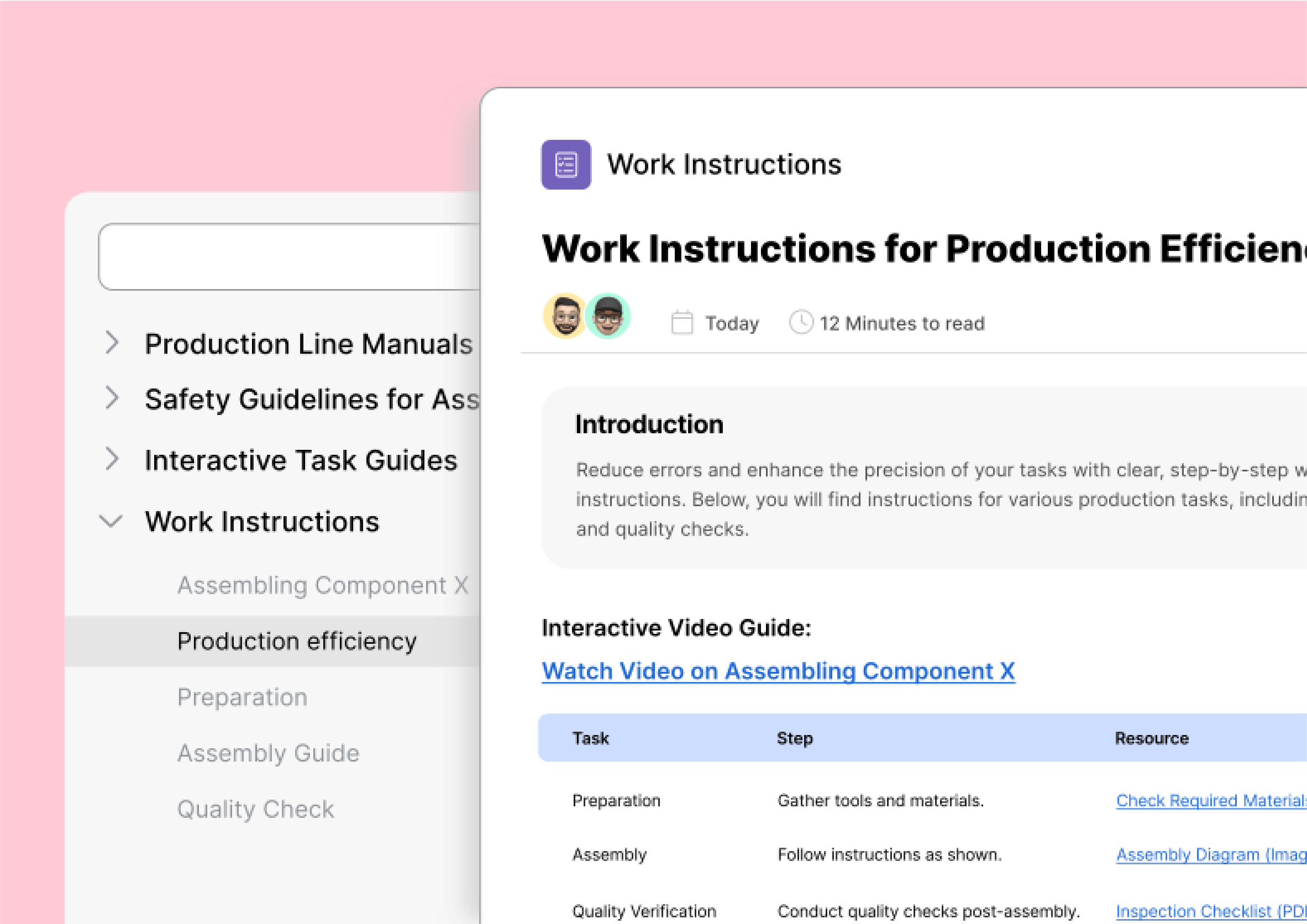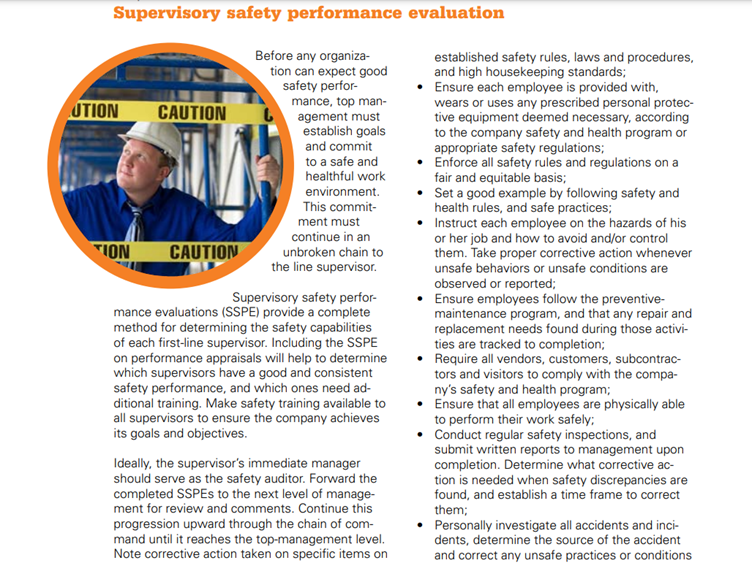A construction job is not something that you associate with documentation. Construction workers are likely to dive right into work without considering the necessary safety elements of the job, but it’s management’s responsibility to account for workplace safety on the construction site.
The truth is the construction site contains all sorts of hazards that need to be documented for worker safety. It’s a dangerous business and you’ll need to think about all the workplace risks before you commence your construction job. You can’t let anyone on your site until you have created the construction manual needed to ensure workplace safety.
Your construction manual needs to outline the risks, from falling bricks to heavy machinery to corrosive materials, and document the steps you will take to keep workers safe. This can include all sorts of measures, from Personal Protective Equipment (PPE) to correctly using equipment that is a reasonable precaution against personal injury, such as ladders and steps.
Not only do you need to include safety measures in your construction safety manual, but also document an action plan in case of an emergency. Accidents do happen and the construction safety manual is there to help site safety personnel in their jobs as well as to educate workers on workplace safety.
What is the Construction Safety Manual?
A construction safety manual is a document containing details of your company’s requirements for safety and how you will implement these considerations. It contains the information that relates to the company’s commitment to a safe work environment, and preserving the health and safety of its workers.
It’s usually approved by the senior management of the business but can be written by project managers or other safety personnel. Workplace safety should be a top priority, and the construction safety manual needs to be in place before you start work.
It’s a comprehensive guide to all things safety-related on your construction site compiled into one manual. It’s a thought-out plan for risk management in case of hazards and accidents and is designed to keep workers safe as they go about the construction business.

Why Should You Have One?
To Meet Legal Requirements
The construction safety manual is a legal requirement in many countries as it is designed to keep workers safe and mitigate workplace risks. If you don’t produce a construction safety manual, then you will not be workplace compliant, and the job cannot go ahead. In the UK the construction industry is regulated by the Health and Safety Executive, while the US construction industry is regulated by OSHA. If you have an inspection by either body it will be useful to at least produce a basic construction safety manual.
To Protect Your Workforce
The construction safety manual shows you’ve thought about how to protect your workforce from workplace risks. These will be unavoidable no matter how carefully your workers go about their jobs. The construction manual includes how to take all reasonable measures to protect workers from hazards but also instructs you on what to do should an accident occur.
To Improve Company Reliability
A comprehensively documented safety manual makes a company more reliable because it allows you to operate all safety procedures effectively. It’s also a better workplace overall because it doesn’t leave workers responsible for their own safety. Your company will know what to do in the event of an emergency.
To Support in Risk Management
If you’ve thought about workplace risks adequately and included them in your construction safety manual, this reduces the chances that workplace accidents will occur. Documenting your risks thoroughly allows you to take steps to mitigate them and keep workers safer because you can refer back to your manual. You’re aware of the risks and the dangers they might pose to your employees.
Also Read: Guide to Manufacturing Work Instructions in Simple Terms
Key Elements of a Construction Safety Manual
A construction safety manual works as a comprehensive guide to ensure a safe and compliant workspace. The Occupational Safety and Health Administration (OSHA) is a federal agency in the US that enforces workplace safety and health standards. Here are sample templates given by OSHA for workspaces in different industries.
Download the Sample template here

General Health & Safety Policy
This is like your construction safety manual summary, often written by your company’s owner. It expresses how health and safety are core values. It reiterates your commitment to keeping workers safe and mitigating the risks on the construction site. It doesn’t go into detail about specific health and safety policies but provides an overview of how you’re going to protect your workers on the job.
Safety Responsibilities of Every Role
This section includes what is expected of every company employee, from the owner to management to individual employees. Each role has very different responsibilities when it comes to health and safety, so for example the owner will provide a safe work environment and cover the costs of PPE. Management will comply with safety regulations and company policy, as well as ongoing safety training. Employees will report all safety issues to management, work in a manner that does not endanger themselves all others, and wear PPE.
Workplace Hazard Identification
Include a general list of hazards that workers may encounter in the workplace without being overly specific to any one trade. This could include heights, falling materials, corrosive materials, or anything else workers might encounter that would endanger workplace safety. You then need to include a method for avoiding these hazards and keeping workers safe, for example wearing PPE such as a hard hat to protect from falling materials.
Safety Work Procedures to Handle Machinery & Hazardous Material
Many workplace procedures, if not handled correctly, can lead to problems over time, although they might not be considered hazardous at first glance. For example, moving heavy objects can lead to repetitive strain injury and back problems, so your construction safety manual should include procedures for handling these objects safely. It should also include procedures for handling machinery and hazardous materials to keep workers safe.
Preventive Maintenance
Ongoing training is essential for implementing your safety manual to maintain safety in your workplace preventatively. All employees should be onboarded with the construction safety manual to learn the correct practices and procedures that keep them safe on the construction site. The manual should be consulted to take all practical steps to eliminate hazards in the workplace before they cause a serious accident.
Safety Training Materials
Any spare documents relating to safety training should be near the end of your manual, such as risk assessment plans, new employee onboarding packages, or forms you use for inspections when you want to conduct a safety audit. These will be documents used by employees for anything safety-related and are compiled in an accessible place within your manual.
Inspections, Investigations, and Reporting Documentation
Any documents that relate to inspections, investigations, and reporting whenever there is an accident on your site should go at the end of your manual. Every time there is an incident it should be reported and documented thoroughly for recording purposes which you will then use to decide what corrective action to take. It helps you decide if the incident was the worker’s fault or the company’s and can enable you to compensate accordingly.
Schedule a demo with one of our experts to explore how Document360 can simplify creating your construction safety manual
Book A Demo
How to Create an Online Construction Safety Manual?
Choose a Tool to Create the Safety Manual
Having the right manual software is essential for documenting your construction safety manual. Document360 has been designed for companies that want to document policies and procedures in an easy and intuitive way. Document360 enables you to get up and running straight away with an easy-to-use WYSIWYG editor, categories, and version control, so you can document your manual as a team.

You can make your knowledge base private so it is only accessible to employees inside your company. Use AI search to make your manual easily searchable and smoother so that employees can find what they’re looking for. Customize your manual so it matches your company’s branding.
Transition Resources from Paper to Digital
You can transition to digital instead of paper manuals. Document360 makes this easy with an import from Word feature, so you can import all your documents without having to write them again. Your manual is more likely to be used if employees can access it on their smartphone, for example, so it makes sense to use a digital knowledge base.
Incorporate Interactive Element
Include an interactive element such as allowing employees to comment on your manual, which makes it more of an engaging process. Enabling employees to give their feedback makes your manual so much more interactive so it becomes a living document. Employees feel a sense of ownership of your manual and are much more likely to use it.
Ensure User-friendly Access
Make it easy to access your knowledge base by making it available online so employees can consult the manual wherever they are. Optimize your mobile and tablet manual so employees can use different devices to access your knowledge base. Using knowledge base software like Document360 ensures you have a site that is optimized for access on any platform. Allow employees to log into your knowledge base with Single-Sign-On so they don’t have to memorize even more login details.
Also Read: How to Write Product Manuals?
Conclusion
A construction safety manual is an essential component of any construction job. From anticipating the risks and knowing what to do if an incident occurs, taking the time to document health and safety ensures your business is compliant in any accident. Some of these things may seem obvious, but they should all be included in your safety manual.
Businesses must take accountability for health and safety on the construction site, and providing a safety manual is an essential step. There are many hazards associated with working in construction and workers put their lives on the line to help your business, so offering a construction safety manual is all part of being a caring company.
Using knowledge-base software like Document360 is key to creating a friendly and accessible construction safety manual that you can update at any time. Anyone can use Document360 to create a robust manual that looks good and is ready to be viewed by employees within hours.
Frequently Asked Questions
-
Why should a construction safety manual be available online?
If a construction safety manual is available online this means that employees are more likely to access it. Especially if they are using a smartphone or tablet, employees can access health and safety information on the job instead of having to find a paper manual, and it’s also unlikely to get damaged and become unusable.
-
How can I make the online manual user-friendly for workers in the field?
Use simple language and localization so that employees can understand the content of your manual even while in the field. Use bright and contrasting colours for a user-friendly knowledge base that is easy to use even when the environment might be dusty. Avoid using anything that relies on sound as workers may not be able to hear it over loud equipment.
-
How often should the safety manual be reviewed for updates?
Every three months is the minimum amount of time that you should review the construction safety manual for updates. Any more than that and it becomes too time–consuming, and any less and your manual will not be a living document that your employees can consult for the latest information.




 –
– 

